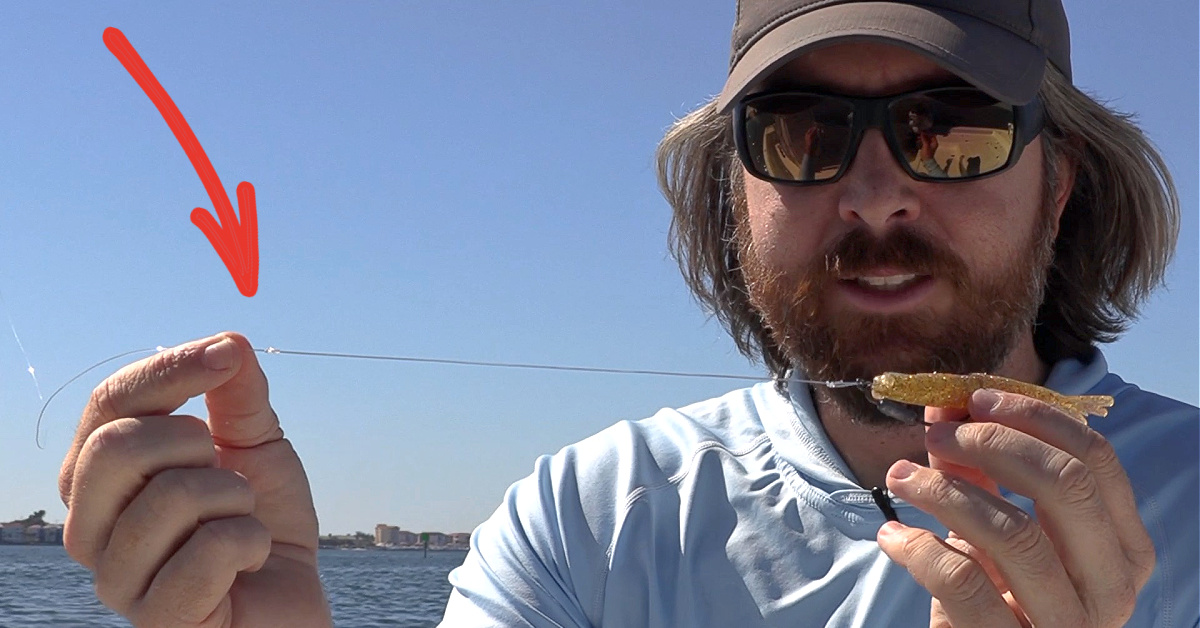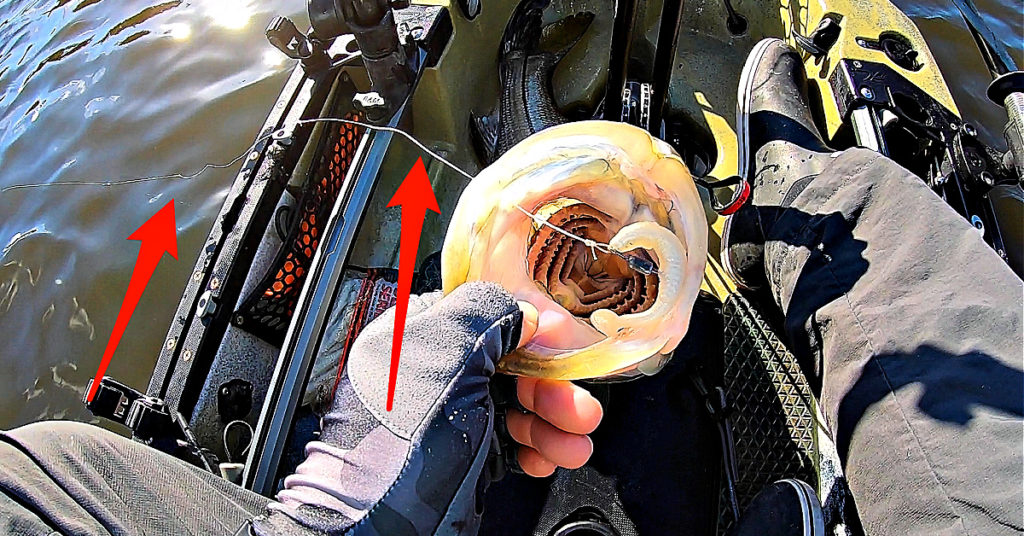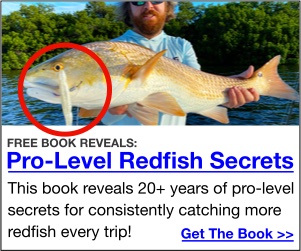Dirty Deeks Leader Assembly (The Beefed-Up Tip)
- By: Sean Person
- on

How can you strengthen your leader to target bigger, smarter fish?
How do you assemble the “Dirty Deeks” beefed-up leader?
If you want to strengthen your leader for targeting larger fish, then check this out!
Learn more below!!
Dirty Deeks Leader Assembly [VIDEO]

The Dirty Deeks Leader will strengthen your leader using lighter line to catch bigger fish.
You combine two sections of leader to form the Dirty Deeks.
The top section attached to your braided line is going to be lighter than the shorter, beefed-up tip.
Most of the abrasion and damage to your line will happen close to the lure down at the end of your leader.
This is due to the tough mouths of snook and tarpon or the fangs of a trout.
The lighter section of line is to cause less vibrations and friction in the water that a fish may be able to sense.
To assemble the Dirty Deeks, it is best to use a #20 line for the lighter, longer leader attached to a #30 heavier leader tip tied onto the lure.
This setup will increase the amount of big fish that strike your lures and will better help you land them.
It can increase strikes because they won’t be able to feel the vibrations of the lighter section of leader as much.
As far as landing more fish, the tip of the leader is stronger which helps against line abrasion.
Assembling The Dirty Deeks Leader
In order to tie the braided line to the first, lighter leader, you can use whichever knot you prefer but a very effective knot is the FG Knot.
The FG Knot has proven to be the strongest knot for braid-to-monofilament connections after many knot strength tests.
The monofilament leader should be around 18-24 inches.
For tying the mono-to-mono knot, a Blood Knot works best.
It is a streamlined knot that will not alert a fish or snag any weeds as it moves through the water.
In a previous knot contest, the Blood Knot beat out the Double-Uni Knot in both strength and sleekness.
As far as the beefed-up tip, 6-8 inches of a heavier line is preferred.
If after catching a few fish the line starts to fray, you can cut the shorter leader in half.
And if the shorter beefed-up tip frays even more, you can cut it off and retie a new business end.
You get a lot more bang for your buck and you won’t have to constantly retie the FG Knot.
Conclusion

The Dirty Deeks rig was created by Capt. Peter Deeks to catch trophy fish with live bait, however, it can be applied to fish with artificial lures.
If you are fishing in an area with lots of snook, this leader assembly will help you reduce abrasions and land that fish of a lifetime.
A beefed-up leader will save you lots of hassle in assembly and it will help you land more trophy fish!
If you have any questions on strengthening your leader, please let me know down in the comments!
And if you know someone who wants to learn more about the Dirty Deeks Leader, please TAG or SHARE this with them!
P.S. Want access to our best fishing spots and tips, plus discounts to our online tackle store? Click here to join us in the Insider Club!
Related Articles:
Related categories:
STOP WASTING TIME ON THE WATER!
Do what the “SMART ANGLERS” are doing and join the Insider Club.
Here’s what you’ll receive today when you join:
- Weekly fishing reports and TRENDS revealing exactly where you should fish every trip
- Weekly “spot dissection” videos that walk you through all the best spots in your area
- Exclusive fishing tips from the PROS you can’t find anywhere else
- Everything you need to start catching fish more consistently (regardless if you fish out of a boat, kayak, or land).










Hi Luke! How many wraps do you do on each side of the blood knot when say going from 15/20lb top leader to 30/40lb beefed-up tip?
If I’ve learned anything, I’d say 5/6 wraps on the top leader side, then maybe 4/5 wraps on the business end?
I wish I had to worry about getting my 20 pound leader broken off by a snook
They are surprisingly good at chewing thru line.
It’s nothing that hasn’t been done over the past 100 years by fly fishermen. It’s called an abrasion tippet. I’ve been doing it for decades.
Thanks for posting the helpful comment Ray
Indeed it has been used before but thanx for the reminder. This will come in handy in a number of occasions, from rough bottoms etc. Thanx..
Thanks great video. Was that a AC/DC reference ? Dirty deeds done dirt cheap?
Haha! We didn’t name it, so not sure what the origin of the name is from.
Question: The fishing industry refers to nylon fishing line as “mono” because it is has a monofilament structure and the fishing industry refers to fluorocarbon fishing line as “fluoro” because it also has a monofilament structure? Shouldn’t nylon fishing line be referred to as “nylon” to reflect the material its made from?
That sure makes sense to me.
When, if ever, would you recommend a 10# main leader and a 20# or 30# sub leader? Seems I have heard some discussion about this.
I’ll be using that setup for sightfishing this winter… the 10 lb top section of leader will be less likely to spook fish while the beefed up tip will help ensure the fish can’t run through the line.
Great stuff!!! Been using it for a while and no issues to date. Thanks for emphasizing the size of each section – wanted to make sure that I was using the correct size. Nice video Luke
Thanks Pablo!
Great idea that you presented in an earlier “on the water” video.
One point that may be important is when using this leader technique, it’s advisable to use a loop knot to tie on the lure so that the stiffer heavy mono doesn’t buffer the action of the lure. You show that in the video, but don’t mention it.
I believe that it’s always advisable to use loop knots because retry give the lure more freedom of motion which generally translates to helping it trigger more strikes.
Did you say you might drop down to a 15lb leader with a 30lb tippet?
Yes. I just got some 12 lb mono to start using when the water is very clear.
I thought using a shock or bite tippet was pretty standard. Back in my fly fishing days I used 8-12” of 40# much of the time for inshore work. With the heavier tippit attached to the lure a loop knot is more often required.
It has been common for fly fishing, but not nearly as common for spinning or baitcasting.